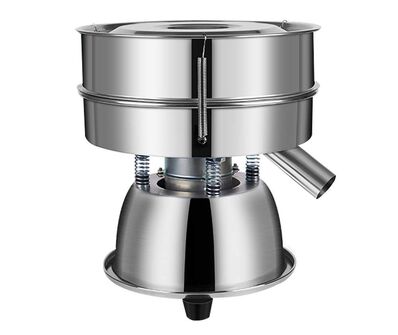FILTERING BEE VENOM
The bee venom is now inspected and filtered to remove unwanted particles. In the sieve machine, the bee venom passes through fine-mesh filters that mechanically stop particles larger than the bee venom crystals.
|
A sieve machine guarantees that your product is clean and free from unwanted particles.
|
This is a vibrating sieve machine that can sieve bee venom and remove any unwanted particles. Available both for 110 V and 220 V. If you are using 220 V, we would recommend buying an adapter for the 110 V version instead to save some money.
This machine can sieve bee venom through a particle filter. A filter with a mesh size of around 200 works best, but this depends on the bee venom's composition and how moist it is. So you might need different filters for different batches. |

